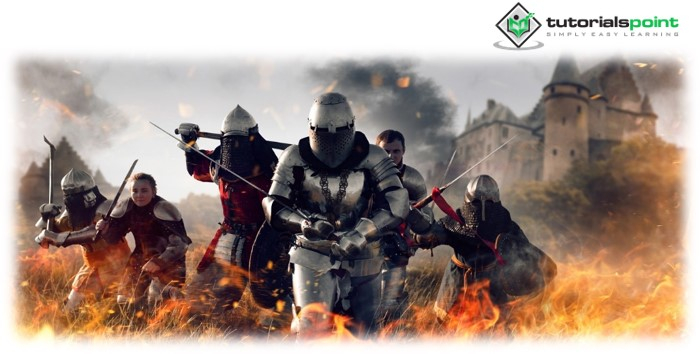

The Middle Ages, commonly referred to as the Medieval Times, was a time in European history that spanned roughly from the 400s to the 1400s CE. Turning inward, advancements in agriculture and technology and modifications to the religious order all occurred during this time period. But there was no standard uniform for mediaeval soldiers. The majority of soldiers wore their regular attire—usually a tunic, pants, and shoes—along with an emblem designating them as soldiers. Additionally, soldiers wore a helmet and at least one form of light armour over their clothing. Eventually, St. George’s cross-adorned helmets were worn by English soldiers. Soldiers were more likely to wear matching uniforms in urban regions than in rural ones. Additionally, soldiers wore a helmet and at least one form of light armour over their clothing.

In the Middle Ages, mounted soldiers served a lord or other aristocrat. He was tasked with protecting the lord’s castle and fighting to advance the lord’s objectives. Protection from the blows of opposing weapons, such as swords, battle axes, and lances, was provided by armour.
In the Middle Ages, a soldier would dress comfortably in a padded vest called a gipoun and a fustian-colored woven tunic. Chain mail, a coat constructed of interconnected chains known as a habergeoun that could weigh up to 30 pounds, was the earliest sort of armour that soldiers wore. Chain mail eventually gave way to plate mail, or metal armour. The entire body was coated in plate mail. It was created by circling one and a half-inch metal strips together and sewing them together according to the measurements of a specific soldier. Breastplates, cuisses, and greaves all provided protection for the chest, thighs, and calves. Gorgets were plate collars that provided protection for the upper chest, shoulders, and neck.
Soldiers gained an additional 14 pounds when they put on their helmets, on top of the weight of their body armor. The helmets, known as “bascinets,” had an open face and a visor that the soldier could raise. They were pointed or rounded on top. Some soldiers covered their entire head and face with a tight helmet and a bevor, a piece of metal that extended from the chest plate. The helmet and the whole set of armour can weigh up to 100 pounds.
A soldier wore woollen hose and linen undergarments below his armor. Over these, he wore a collarpiece made of slack but firm leather. A more affluent soldier would then wear a linen tunic, whereas a less affluent one most likely wore a woollen one. The soldier would then put on a surcoat, a long shirt with short sleeves and side slits to make mounting a horse simple. Surcoats were often made of linen or silk and embroidered with the soldier’s insignia. These underclothes were crucial for shielding the soldier’s skin from the effects of his own armour.
Sabatons, which served as foot armour with iron plates on the boots, were the first component of a soldier’s armoured outfit to be put on. He would then put on greaves, a type of plate armour that covered his ankles and calves. A poleyn plate would protect each of his kneecaps.The thigh was covered in cuisses, which are plates. As soldiers were proficient riders, they wore spurs. Besagues covered the armpits. Each upper arm had a ree brace, while his lower arms had a vambrace. The soldier’s hands were shielded from harm by gauntlets. A piece of armour known as a breastplate held a soldier’s breastplate and backplate together while also defending other parts of his upper body. The chainmail bascinet on the soldier’s helmet served as neck protection, and it included a visor for enhanced visibility.
Not all soldiers served their rulers by plundering, crusading, or engaging in combat. When not in uniform, a soldier would have appeared to be a landowner at the time. He would have dressed in silks and linens embellished with needlework and the colours prevalent at the time. Surcoats and caps went in and out of style, and shoes eventually started to be padded for comfort. Toward the conclusion of the era, robes and cloaks became the norm for men of this station.
For increased protection during battle, armour originally consisted of reinforced leather parts fashioned to the attire of the soldier. Soldiers had to adjust by employing chainmail armour because leather armour was still susceptible to attacks with a blade or arrow. Chainmail is created by connecting tiny metallic rings. It could be tailored to the soldier’s armour to protect just about any body area and was fairly flexible. Even so, chainmail was no match for a well-placed shot or a sword’s strike. These factors led to the adoption of plate mail, which produced the modern suit of armour. The soldier was covered and protected with plate mail, which was made of metal plates. Even now, joints and other moving parts of the body are covered in chainmail. Similar to the evolution of the armour, the soldier’s helmet progressed from leather caps to chainmail protection to the modern full-face soldier’s helmet.
In the Middle Ages, being a soldier meant upholding the chivalric code and engaging in combat in the service of one’s lord. Medieval soldiers fought for a thousand years between 500 and 1500 A.D. as part of the feudal system, which was a particularly bloody time in history. They were well known for their armour, which they developed because it provided the best battlefield protection. Soldiers were known to dress in the vogue of the day when they were not serving in the military because they were typically from noble or landowning families. The armour used by mediaeval soldiers varied depending on the situation. As already mentioned, there wasn’t any particular uniform for soldiers. However, there were some characteristics that set the mediaeval soldier apart from the rest.